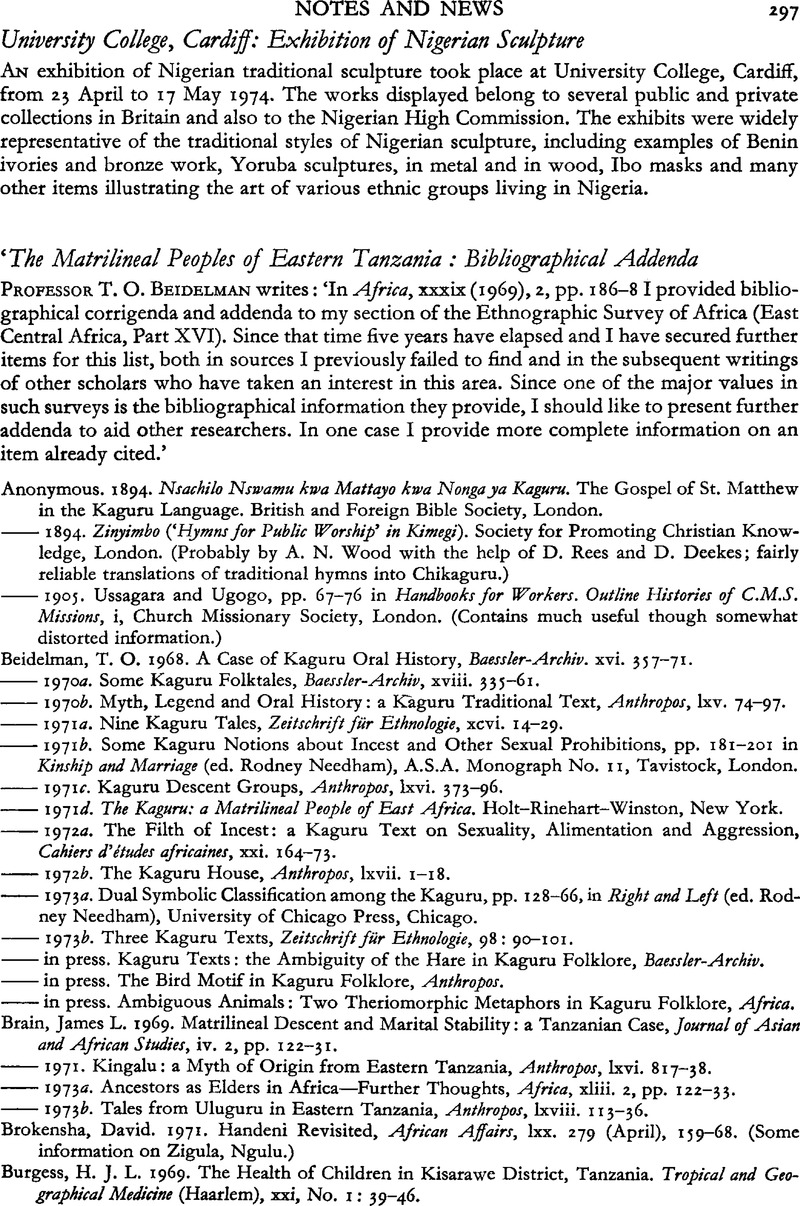Richelmann, G. 1892.
Meine Erlebnisse in der Wissmann-Truppe.
Creutz.
Magdeburg. (Recollections by a former district officer at Bagamoyo; much on Bushiri's rebellion; little on ethnography, but useful on early political affairs, especially for Bagamoyo, Pangani, Tanga, and Uzaramo.)
Google Scholar 